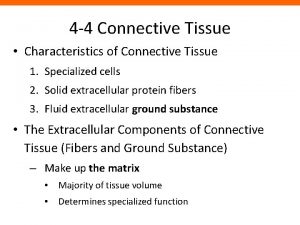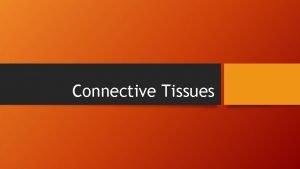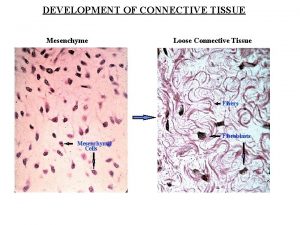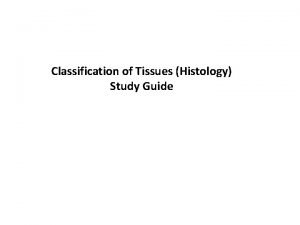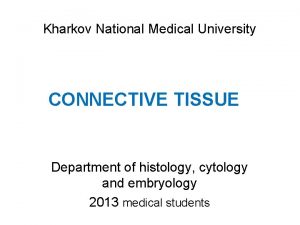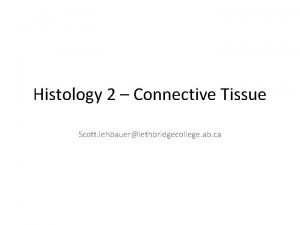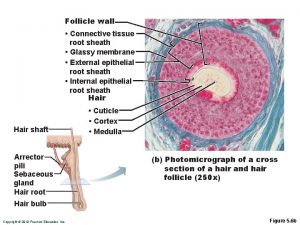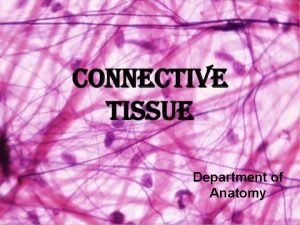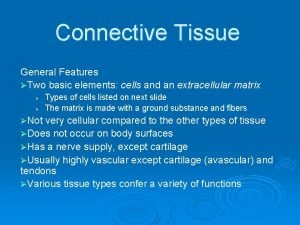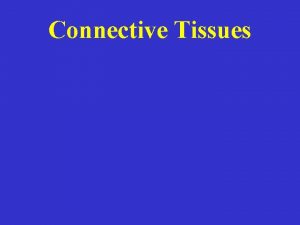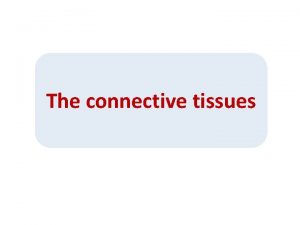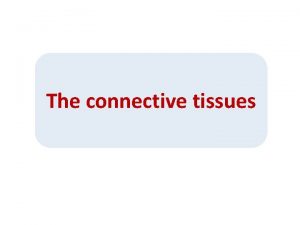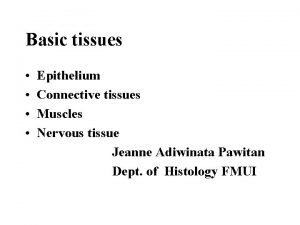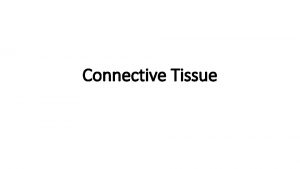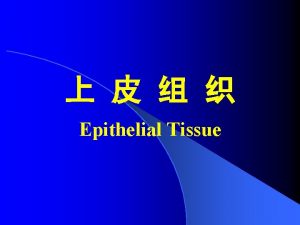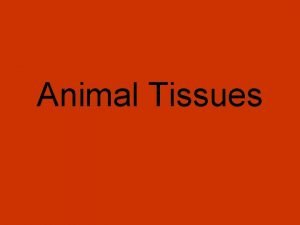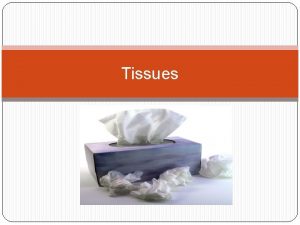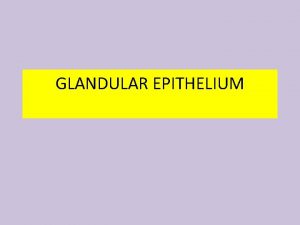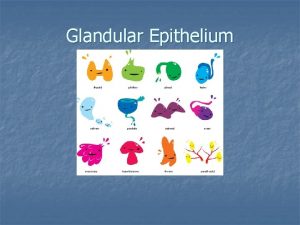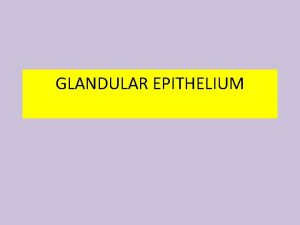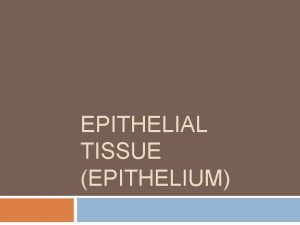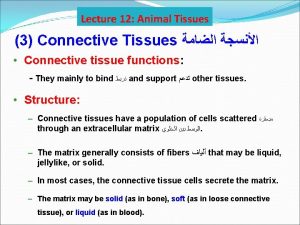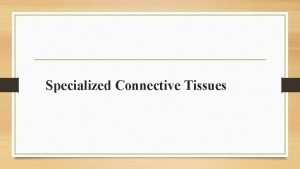Types of Tissues Epithelium Nervous tissue Connective Tissue





















- Slides: 21



Types of Tissues Epithelium Nervous tissue Connective Tissue Muscle tissue Neurons – nerve cells Neuroglia – insulating Skeletal - voluntary Smooth – involuntary, in organs Cardiac – involuntary, heart cells

classified by

Epithelial Tissue Forms outer layers and linings Functions are protection, absorption, filtration, and secretion Attaches to a basement membrane and connective tissue Regenerates easily Avascular – no blood vessels classified by Shapes Cuboidal Cube-shaped Squamous “Scales” Flattened cells Layers Columnar Tall and thin Simple Single layer Stratified > one layer


Cuboidal Fairly rare -found lining the ducts of glands Functions of Epithelial Tissues Stratified squamous Simple Squamous Epi. Forms serous membranes Which line the inside of body cavities and outside of organs Glandular Epi. Secretes substances Endocrine “ductless” Hormones used in the body Exocrine Ducts carry stuff out of the tissue Sweat, oil, pancreas, liver Epi. High wear areas – skin, mouth, esophagus Columnar Epi. Forms mucosa membranes that line surfaces exposed to the air Contains goblet cells that produce mucus Transitional Epi. Stretchy tissue that changes shape Mostly found in urinary system


Connective Tissue Cells embedded in extracellular matrix Bones Osteocytes Matrix of Ca salts and collagen fibers Hardest Cartilage Chondrocytes Matrix of cartilage types and fibers Dense Connective Fibroblasts Matrix of collagen fibers Regular - forms tendons and ligaments Poor blood supply Irregular - dermis Loose Connective Softer, More cells Loosely packed fibers Softest


Cartilage Avascular no blood vessels Chondrocytes Matrix of cartilage types Hyaline Cartilage Harder, Glassy Larynx, ribs to breastbone, ends of bones, fetal skeleton Fibrocartilage B/w backbone discs Elastic Cartilage Ears, nose


Loose Connective Areolar “Small empty spaces” Cushions and protects organs Soaks up excess fluids Reticular Interwoven fibers Form framework of spleen, lymph nodes, and bone marrow Adipose Fat cells Underneath skin, around kidneys, hips, belly, breasts Insulates, stores energy Blood Plasma matrix Protein clotting fibers

Squamous Simple Squamous Cuboidal Stratified Squamous Columnar

Stratified squamous Cudoidal Columnar Simple squamous

Transitional Epithelium Pseudostratified ciliated columnar epithelium

Bones Osteocytes

Hyaline Cartilage fibrocartilage

Nervous tissue

Skeletal Muscle Smooth Muscle Cardiac Muscle

 Fundamentals of the nervous system and nervous tissue
Fundamentals of the nervous system and nervous tissue Nervous
Nervous Fundamentals of the nervous system and nervous tissue
Fundamentals of the nervous system and nervous tissue Body tissues chapter 3 cells and tissues
Body tissues chapter 3 cells and tissues Body tissues worksheet
Body tissues worksheet Body tissues chapter 3 cells and tissues
Body tissues chapter 3 cells and tissues Cells form tissues. tissues form __________.
Cells form tissues. tissues form __________. Anatomy chapter 3 cells and tissues
Anatomy chapter 3 cells and tissues Specialised connective tissues
Specialised connective tissues Characteristic of connective tissue
Characteristic of connective tissue Fibrous cartilage description
Fibrous cartilage description What do all connective tissues have in common
What do all connective tissues have in common Mesenchymal connective tissue
Mesenchymal connective tissue Basal lamina
Basal lamina Tissue
Tissue Description of nerve tissue
Description of nerve tissue Fibrocytes
Fibrocytes Reticular tissue labeled
Reticular tissue labeled Glassy membrane of hair
Glassy membrane of hair Dense irregular connective tissue
Dense irregular connective tissue Identify this tissue
Identify this tissue Areolar tissue
Areolar tissue









